Sound: 









Value: 









(Read about our ratings)
Measurements can be found by clicking this link.
How many closed-back headphones are priced at $2000 and up? Not many. The Focal Stellias ($3000, all prices USD) come right to mind, and I suspected HiFiMan has a model, but I had to look it up—the HE-R10P headphones ($5499). Now Meze Audio is entering this tiny market with the new Liric, a closed-back, scaled-down, less-expensive version of its big, open-back Empyrean and Elite headphones.
The new Liric headphones ($2000) morph the winning formula of the Empyrean and Elite headphones into a design more suited for mobile use. The Lirics are smaller and lighter, with a downscaled version of the Rinaro Isoplanar diaphragm that helped make Meze’s more expensive headphones such a sonic success. The Rinaro diaphragm is sort of a passive two-way version of a standard planar-magnetic diaphragm. Instead of the voice coil simply going back and forth across the full height of the diaphragm, in the pattern of a lawnmower, the Rinaro diaphragm divides the coil into two sections: a small, circular section of the coil positioned over the ear canal that serves as a midrange/tweeter, and a larger section laid out in a “switchback” pattern, like a pass through the Swiss Alps.
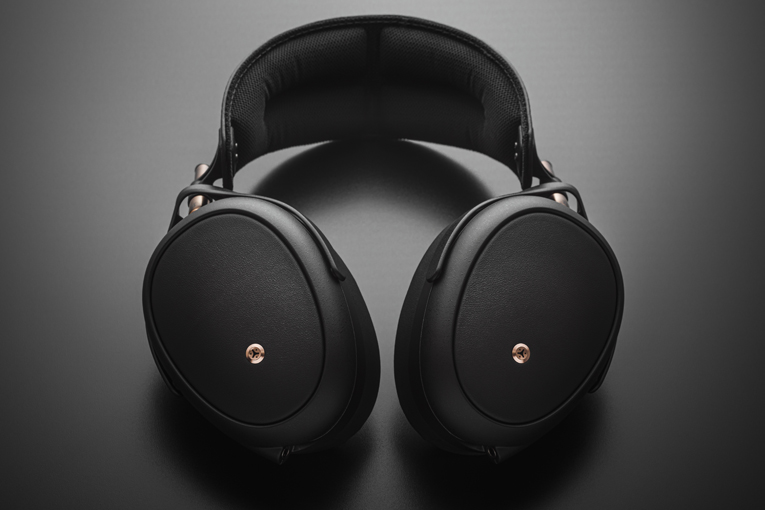
Meze didn’t just shrink the driver, though—it also added a couple of innovations. First is the brand’s Phase-X technology. It’s not described in any meaningful way, but Meze says it restores the spatial cues that are typically lost in closed-back headphones. Huh. Open-backs definitely sound more spacious than closed-backs, so at least there is an issue to address here, but there’s no way to tell if these claims are plausible from a physics standpoint.
The other innovation is the Earpad Air Flow (EAF) system, which vents the chamber behind the drivers into the earpads, effectively using the interiors of the earpads as a resonant chamber. Of course, the earpads are filled with memory foam and made from leather panels sewn together, so I don’t know how effective they are as acoustic chambers, but maybe the measurements (accessible through the link at the top of this page) will show us something interesting about the Lirics’ operation.
The Lirics’ industrial design looks like a somewhat stripped-down, more mobile-friendly version of the rather ornate Empyreans. They’re rated at 30 ohms impedance and 100dB/1mW sensitivity, which should make them drivable with just a phone or tablet. But the measurements will tell us for sure.
In the box
Meze includes two cables—one 4.9′ (1.5m) and one 9.8′ (3m). Both are tipped with 1/8″ (3.5mm) mono plugs on the headphone ends and a 1/8″ stereo plug on the source end. Meze offers a $59 cable tipped with a 4.4mm Pentaconn balanced connector on its website.
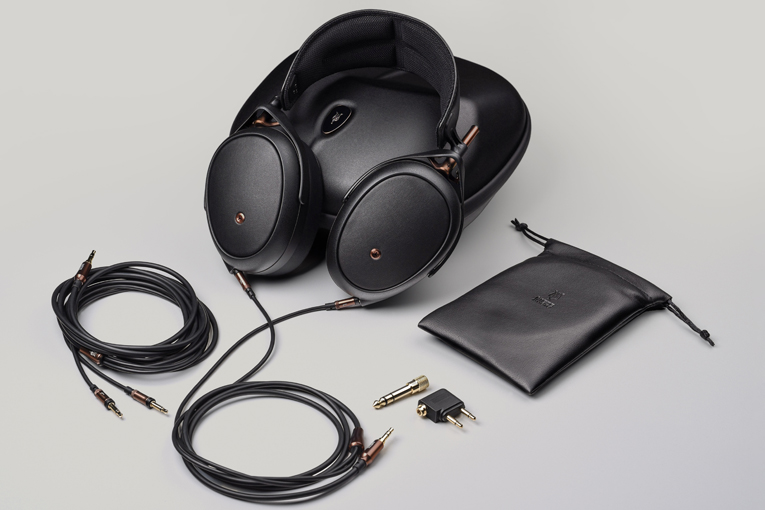
The carrying case is a nice molded design that’s sturdy and light. A small sack for the extra cables is included, along with a 1/4″-to-1/8″ adapter and a dual-mono-to-stereo adapter for old-school airliner entertainment systems.
Use
The Lirics aren’t heavy, but for headphones intended in part for mobile use, they’re not light: 405g, vs. 355g for the Beyerdynamic T5 (3rd generation) closed-back headphones. (I weigh headphones with the cables attached, so my weight measurements may be higher than the manufacturers’ specs.) I found them comfortable in general, although they placed a little too much pressure on the soft spots below my ears.
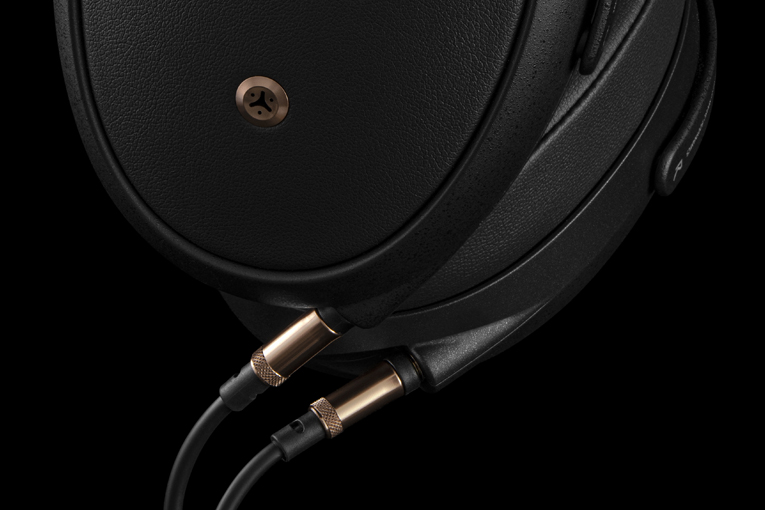
With most material, the Lirics played loud enough plugged straight into my Samsung Galaxy S10 phone, but with older and more conservatively mastered material, they fell about 3dB shy of satisfying performance. So I mostly used them with EarMen Sparrow and AudioQuest DragonFly Cobalt DAC-amps.
Sound
The first thing I listened to through the Lirics was an album I hated when it came out in 1980: Friday Night in San Francisco, a live acoustic guitar trio album by Al Di Meola, John McLaughlin, and Paco De Lucia (16-bit/44.1kHz FLAC, Columbia-Legacy/Qobuz). I hated it not only because it sounded like three guys trying to dazzle the audience by playing as fast as they possibly could, but also because it sounded less like three acoustic guitars than three people drumming on cigar boxes with pencils. Part of that was because the media of that era were mostly cassettes and mediocre vinyl pressings, so after watching Di Meola interviewed on Rick Beato’s YouTube channel, I was curious what the album would sound like in digital, through headphones that I expected would be far better than anything available when this album debuted.
The CD-quality recording, played through the Lirics, sounded far better than what I remember from my early adulthood. There was loads of detail; I could hear every nuance in the trio’s playing, yet the sound was never etched or edgy. The guitars also had what sounded like a just-right amount of body. Acoustics have a bit of “whoom” sound that comes from their body-cavity resonance, and many headphones either emphasize this (which makes the sound bloated and dull) or attenuate it (which makes the sound thin). But the Lirics got it right.
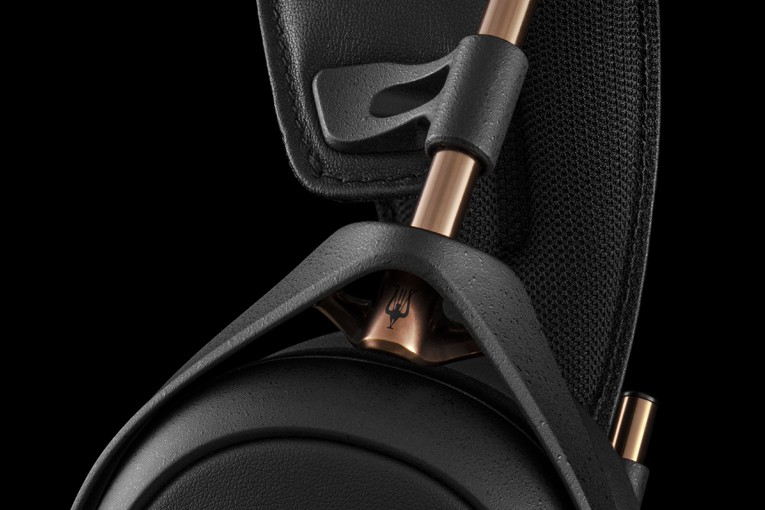
To double-check, I put on the much-better-recorded (and less pandering) 1996 studio album from Paco De Lucia, Al Di Meola, and John McLaughlin, called The Guitar Trio (16/44.1 FLAC, Universal/Decca France/Qobuz). The Lirics easily sorted out the considerable sonic differences between these albums. The guitars—apparently much more closely miked than on the live album—sounded fuller and more natural, with a more intimate, impactful, and powerful sound. The sound seemed slightly rolled off in the upper treble, although I think this might have been a psychoacoustical effect of this album’s extra dollop of low end.
That same feeling of power pervaded “Wasting My Time,” the opening track from alt-country singer Sarah Borges’s Together Alone (24/96 FLAC, Blue Corn Music / Qobuz). This tune pits Borges’s alto against aggressive acoustic and electric guitar tracks, but to me, the bass guitar kinda stole the show. The track had a big, fat sound through the Lirics, but the bass was quite tight—there was no bloat or boom. However, the bass energy did seem to overpower some of what was going on in the upper mids and treble. Borges’s voice and the acoustic guitar, in particular, sounded clear and uncolored, but as with the second of the guitar trio albums, subtly rolled off.
Wanting to get a better handle on the bass, I put on what, for me, is the bass record: We Get Requests by the Oscar Peterson Trio (24/96 FLAC, Verve/Qobuz), featuring Ray Brown on double bass. For many jazz aficionados, this album is the reference for what jazz double bass should sound like, in terms of the playing and the sonics. Brown’s playing on the standard “Have You Met Miss Jones?” is so adventurous yet so grooving; I’ve listened to this cut over and over through all sorts of gear, even transcribing the countermelodies Brown plays in the head. I thought the Lirics definitely got the bass basically right; I’d say it was just a dB or two fuller below about 120Hz than is ideal, but the detail in Brown’s plucking and fingering was all there.
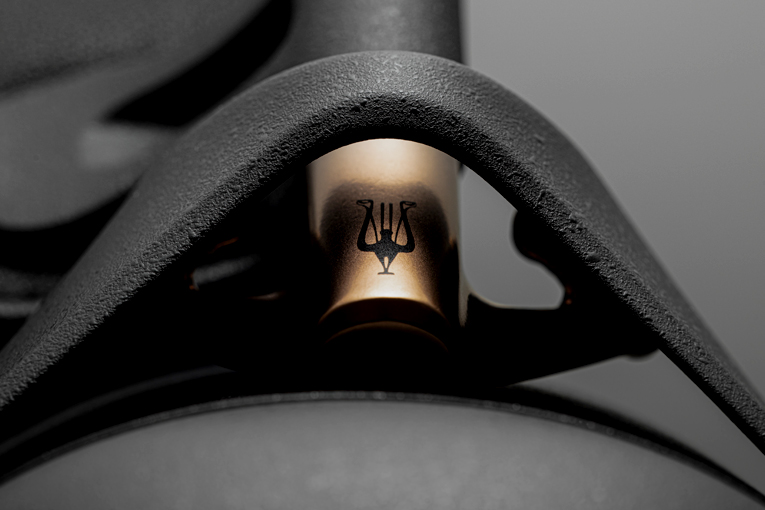
I loved the sense of space We Get Requests produced through the Lirics—it even gave me new insight into how this album was probably recorded. I got a precise sense of the sound of the recording studio from the way Ed Thigpen’s snare echoed off the walls. In fact, I felt I could almost see the instruments in the studio, with the overheads on the drums picking up the studio ambience, minimal ambience from what I assume were stereo mikes pointing at the piano’s soundboard, and zero ambience from the mike that was probably just inches from Brown’s treble-side soundhole. One note, though—Thigpen’s ride cymbal sounded a tad bright, which led me to believe the Lirics have a subtle, narrow emphasis somewhere in the mid-treble.
I had notes on how Camille Thurman’s binaurally recorded version of “September in the Rain” (Waiting for the Sunrise, 24/96 AIFF, Chesky) sounded through the Empyreans and the Elites, so I thought I’d give it a spin through the Lirics. The Lirics did have that little trace of vocal congestion I heard in the Empyreans (although not in the Elites), and I also heard a little bit of extra oomph in the lower range of Thurman’s voice, which I suspect is caused by the resonance of the chamber behind each driver. Maybe the interesting character I heard in the bass indicates that the EAF system is doing something.
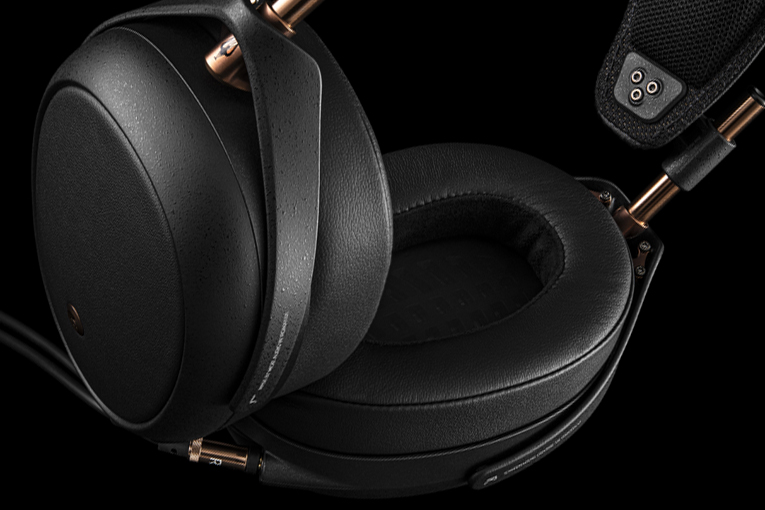
“September in the Rain” also suggested, to me, that the Phase-X scheme, whatever it is, does work to some degree. I have to think the Lirics give up something in spaciousness compared with the larger, more costly open-back models, but it couldn’t be much, because this binaural recording sounded wonderfully spacious through the Lirics. I got a very clear sense of Thurman moving her head slightly from side to side, maybe 6′ from the binaural recording head; the double bass maybe 3′ from the right side of the mike; the electric guitar maybe 10′ away and the drums probably 15′ behind Thurman; and Thurman moving about 15′ back and to the right for her tenor sax solo.
Comparisons
I compared the Lirics with two other high-end closed-back models: the aforementioned Beyerdynamic T5 (3rd generation) headphones, and the Monoprice M1570C headphones ($599, review in the works), fitted with their included leather earpads (which sound less bright than the also-included velour pads).
Saxophonist Roxy Coss’s new single “Part 1: The Body,” from her upcoming album Disparate Parts (320kbps Ogg Vorbis, Outside in Music / Spotify), proved to be a great headphone test because it’s a sonically dense mix that switches furiously back and forth between swing and fusion grooves, so most of the sonic spectrum gets a workout. All three headphones sounded good on this tune, but they all presented subtly different takes on it. I’d say the Lirics offered the most polite presentation of the three, with less mid-treble energy—noticeable especially in the swing section of Coss’s solo, where the Beyerdynamics and Monoprices brought out more of the edge in the sound of her tenor sax. The M1570Cs sounded more vivid but also somewhat “smiley,” with more emphasis on the treble and bass, and less on the midrange—although we’re talking just a few dB here.
Going back to Camille Thurman’s binaural recording of “September in the Rain,” I came to believe that there must be something to this Phase-X thing. The Lirics weren’t dramatically more spacious sounding than the Beyerdynamic T5s, but there was a noticeable improvement—maybe 10 or 20 percent?—in spaciousness, and I did get a little more of that natural feel that good open-back headphones give.
Conclusion
The Lirics are luxurious, physically and sonically. They’re pricey, to be sure, but unlike most super-high-end headphones, they’re quite practical to lug around with you. Detail-obsessed audio enthusiasts may not hear enough treble energy for their liking—they’ll likely prefer HiFiMans or Grados or something like that—but I think perhaps 90% of all listeners will find the Lirics’ sound perfectly balanced and well-suited for any genre of music.
Wait, that sounds like a marketing pitch for the Harman curve, doesn’t it? Now I really can’t wait to see how these measure.
. . . Brent Butterworth
Associated Equipment
- DAC-amplifier: AudioQuest DragonFly Cobalt, EarMen Sparrow, iFi Audio Zen DAC.
Meze Audio Liric Headphones
Price: $2000.
Warranty: Two years, parts and labor.
Meze Audio
Str. Independentei 12/3
Baia Mare, 430071, Romania
Phone: +40 731-426-316
Website: www.mezeaudio.com